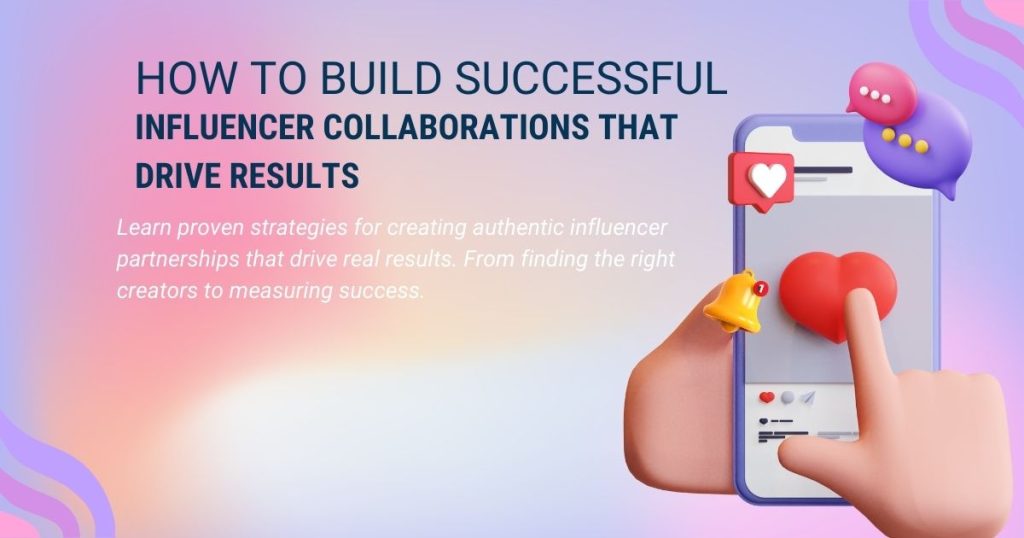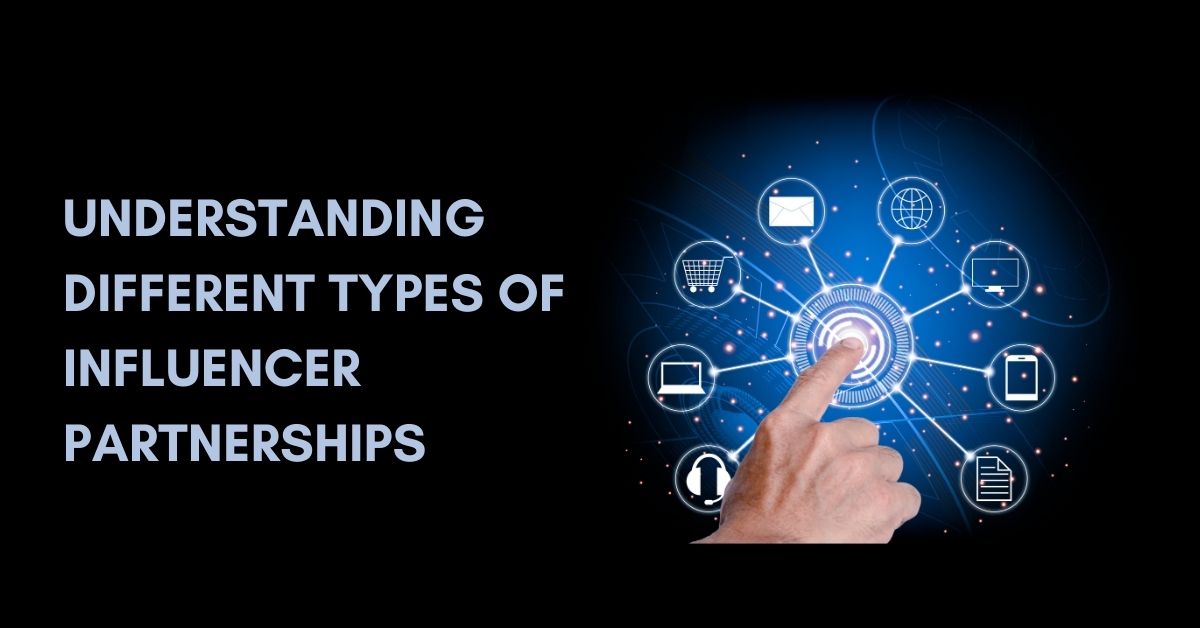How to Build Successful Influencer Collaborations That Drive Results

Influencer marketing has evolved from celebrity endorsements to authentic partnerships that can transform your brand’s reach and credibility. When done right, influencer collaborations create genuine connections with your target audience while delivering measurable business results. This guide will walk you through everything you need to know to build partnerships that work for both your brand and your chosen influencers.
The key to successful influencer collaboration lies in understanding that it’s not just about follower counts or one-off posts. The most effective partnerships are built on shared values, clear communication, and mutual benefit. Whether you’re launching your first influencer campaign or looking to improve your existing strategy, the principles and tactics outlined here will help you create collaborations that resonate with audiences and drive real business outcomes.
Understanding Different Types of Influencer Partnerships

Micro vs. Macro Influencers
Micro-influencers typically have between 1,000 and 100,000 followers, while macro-influencers boast larger audiences exceeding 100,000. Each category offers distinct advantages depending on your campaign goals and budget.
Micro-influencers often deliver higher engagement rates and more authentic connections with their audiences. Their followers tend to view them as trusted friends rather than distant celebrities, making their recommendations more influential. These partnerships are also more budget-friendly, allowing you to work with multiple influencers simultaneously.
Macro-influencers provide a broader reach and can generate significant brand awareness quickly. They’re particularly valuable for product launches or major announcements when maximum visibility is the primary goal.
Long-term vs. One-off Campaigns
One-time collaborations work well for specific product launches or seasonal campaigns. They’re cost-effective and allow you to test different influencers without long-term commitments.
Long-term partnerships, however, often yield better results. When influencers consistently feature your brand over time, their audience begins to associate them with your products naturally. This repetition builds trust and can lead to higher conversion rates.
Finding the Right Influencers for Your Brand
Audience Alignment
The most crucial factor in influencer selection is audience alignment. An influencer with millions of followers means nothing if their audience doesn’t match your target demographic. Research potential partners’ audience demographics, interests, and behaviors to ensure compatibility.
Look beyond surface-level metrics like follower count. Examine engagement quality, comment sentiment, and whether the influencer’s values align with your brand. An influencer who promotes sustainable living would be a natural fit for an eco-friendly product line, regardless of their total follower count.
Content Quality and Consistency
Review several months of an influencer’s content to understand their style, posting frequency, and engagement patterns. Consistent, high-quality content indicates professionalism and suggests they’ll represent your brand well.
Pay attention to how they integrate brand partnerships into their content. The best influencers make sponsored content feel natural and authentic rather than forced or overly promotional.
Authenticity Indicators
Genuine influencers maintain consistent engagement rates across their posts. Be wary of sudden spikes in followers or engagement that might indicate purchased audiences. Tools like Social Blade can help you identify unusual growth patterns.
Authentic influencers also respond to comments and maintain ongoing conversations with their audience. This interaction creates the community that makes their recommendations so powerful.
Establishing Clear Partnership Terms
Compensation Models
Influencer compensation varies widely based on platform, audience size, and content requirements. Common models include flat fees per post, commission-based partnerships, or product-only collaborations.
For micro-influencers, product gifting combined with modest monetary compensation often works well. Macro-influencers typically expect significant payment, especially for extensive content creation or exclusive partnerships.
Consider performance-based compensation for longer campaigns. This approach aligns the influencer’s incentives with your business goals and can lead to more engaged content creation.
Content Expectations and Guidelines
Provide clear guidelines about your brand’s messaging, visual style, and any required elements like hashtags or mentions. However, avoid being overly restrictive. Influencers know their audience best, and their authentic voice is what makes the partnership valuable.
Specify deliverables clearly: How many posts? Which platforms? What type of content? Include deadlines and approval processes to ensure smooth collaboration.
Usage Rights and Exclusivity
Determine whether you need rights to repurpose the influencer’s content for your own marketing channels. Many brands find user-generated content from influencers extremely valuable for their websites and advertising campaigns.
Exclusivity clauses prevent influencers from promoting competing products during and sometimes after your campaign. While this protection is valuable, it typically increases compensation requirements.
Creating Compelling Collaboration Proposals
Personalization is Key
Generic outreach emails rarely succeed with established influencers. Reference specific posts you admired or explain why their audience would benefit from your product. This personal touch shows you’ve done your research and are serious about the partnership.
Start with a brief introduction of your brand and what makes it unique. Then connect your product or service to the influencer’s content themes or audience interests.
Value Proposition
Clearly articulate what the influencer gains from working with you beyond monetary compensation. This might include exclusive access to new products, increased exposure through your channels, or networking opportunities with other creators.
Consider offering creative freedom as part of your value proposition. Many influencers prefer partnerships that allow them to maintain their authentic voice and style.
Campaign Goals and Metrics
Share your campaign objectives so influencers understand what success looks like. Whether you’re focused on brand awareness, lead generation, or direct sales, transparency helps influencers create more targeted content.
Discuss how you’ll measure success and share relevant metrics with your partners. This transparency builds trust and helps influencers understand their impact.
Managing Successful Collaborations
Communication Best Practices
Establish clear communication channels and response time expectations from the beginning. Regular check-ins help prevent misunderstandings and ensure campaigns stay on track.
Provide constructive feedback on content drafts while respecting the influencer’s creative process. Focus on brand alignment and key messaging rather than micromanaging every detail.
Supporting Your Influencers
Share their content on your own channels when appropriate. This amplification benefits both parties and shows you value the partnership beyond the immediate deliverables.
Provide influencers with additional resources like high-quality product photos, key messaging points, or exclusive information they can share with their audience.
Measuring Performance
Track relevant metrics based on your campaign goals. Engagement rates, reach, click-through rates, and conversion tracking provide insights into what’s working and what could be improved.
Use unique discount codes or tracking links for each influencer to measure direct sales attribution. This data helps you evaluate ROI and make informed decisions about future partnerships.
Building Long-term Relationships

Nurturing Partnerships
The best influencer relationships extend beyond single campaigns. Stay in touch with successful partners, share their non-sponsored content, and keep them updated on new products or company news.
Consider creating an influencer community or ambassador program for your most successful partners. These formal relationships often lead to more authentic content and better results over time.
Scaling Your Program
As you identify successful patterns and partnerships, develop systems to scale your influencer program efficiently. This might include creating standardized contracts, developing content templates, or building a database of preferred partners.
Document what works well with different types of influencers and campaigns. This knowledge base helps you replicate success and onboard new team members more effectively.
Maximizing Your Influencer Marketing Investment
Successful influencer collaborations require strategic thinking, clear communication, and genuine relationship building. The most effective partnerships feel natural to both the influencer’s audience and your brand community.
Start small with a few carefully selected micro-influencers to test your approach and refine your processes. As you gain experience and identify what works for your brand, gradually expand your program and explore partnerships with larger creators.
Remember that authenticity always trumps reach. A smaller influencer whose audience genuinely connects with your brand will often deliver better results than a massive account with limited audience alignment. Focus on building meaningful partnerships that create value for everyone involved—your brand, the influencer, and their audience.





